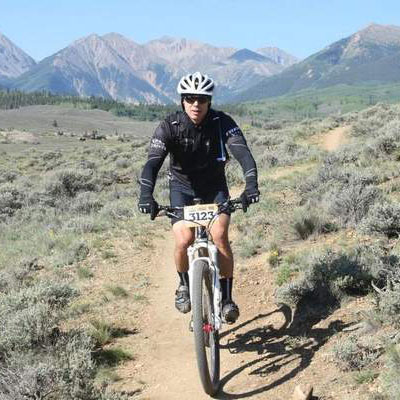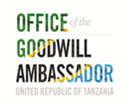'SUFFERFEST' For A Worthy Cause
originally featured in the Springfield News-Leader
The muscle cramps couldn’t have come at a worse time for Doug Pitt.
While relentlessly grinding his Trek mountain bike up the side of a Colorado mountain, Pitt felt his leg muscles seize, with thousands of vertical feet to go before he could turn around.
He knew a lot was riding on his ability to finish the grueling Leadville Trail 100 race last month — $100,000 in charity donations, to be exact.
Yet not even halfway through the race, the pain from the cramps pushed Pitt to stop, get off his bike and decide whether he could make it.
“There is a little moment of panic when I can’t even get my leg over my seat without the cramps coming back,” Pitt recalled. “I can’t even get on my bike. But you just walk it around in circles, and as soon as it subsides you get back on the bike and go. I’d experienced cramping in my training rides but nothing like that.”
Pitt, 45, and biking pal Tim O’Reilly, 44, both businessmen from Springfield, were among more than 2,000 competitors seeking to pedal 103.3 miles across some of the toughest mountain biking terrain in the country.
The out-and-back course starts at an altitude of more than 10,000 feet, then challenges riders to pedal up and down several steep mountains, including a 3,000-foot climb to Hope Pass at an altitude of 12,612 feet. Only 10 percent is on paved road.
For Pitt, crossing the finish line meant earning enough sponsor donations to provide clean drinking water to thousands of Africans through WorldServe International, a charity that brings water and sanitation to people in developing countries. Pitt is a WorldServe board member.
There’s a whole lot going on in your brain,” Pitt said, recalling the start of the race. “That $100,000 is weighing on your mind. I had sponsors there. They were running a campaign. Otter Box (a sponsor) was selling these thermoses for $20. It’s kind of our theme — $20 will provide one person a generation of clean water. They had this big campaign: Doug’s gotta get across this line; help us get him there."
“No pressure,” he quipped. “It was fine. That helped motivate me. There’s no way I was going to stop.”
Kilimanjaro to Leadville and back
Pitt said he took up mountain biking during another fundraising effort — a historic ride down the slopes of Mount Kilimanjaro in Tanzania in January 2011.
The Tanzanian government doesn’t allow mountain bikes on Kilimanjaro. There’s too much competition for trail space with paying tourists who hike the 19,340-foot-tall extinct volcano. But Pitt and three others got permission to do a “test ride” fundraiser, and Pitt became the first American on record to ride a bike down the mountain.
“On the Kilimanjaro pre-ride we did, I literally got a ‘mountain bike 101’ at about 13,000 feet from one of the friends who did this with me,” he said. “It was a pretty dangerous spot to learn to ride a mountain bike, and I had three trips over the handlebars. It’s not for the faint of heart. But it was fun. I really had a great time. Now that I have a little more skill behind me, I’m really looking forward to doing it again in February.”
The Kilimanjaro effort raised $750,000 for WorldServe. Pitt said he hopes the expedition in February — hiking up the mountain and biking down — will generate at least $1 million from clients who’ll pay between $25,000 and $85,000 for the experience.
“Our fundraising effort on that could bring clean water to anywhere from 80,000 to 100,000 people, for a generation,” he said.
While the Kilimanjaro plans took shape, Pitt focused on preparing for the Leadville ride. The event brings together both amateur and professional riders, and one has to finish within 12 hours to get a Leadville 100 belt buckle and bragging rights to say you did it.
Lance Armstrong set a course record in 2009, finishing the race in six hours, 28 minutes, 50 seconds. The current record of six hours, 16 minutes, 37 seconds was set in 2010 by Californian Levi Leipheimer, on his first Leadville attempt.
It was a "sufferfest"
“I’ve always liked being in the gym, just working out with weights, so I’ve always been in shape from that respect,” Pitt said. “But I was not a cardio guy at all. Was I fit? I may have looked the part, but I don’t think I was actually, realistically playing the part.”
Chris Carmichael, a former Olympian and former coach of Lance Armstrong through seven Tours de France, heard about Pitt’s fundraising effort and donated a bike fitness coach. In April, Pitt visited Carmichael Training Systems in Colorado Springs to find out how fit he really was.
“They mapped out my training for the last five months prior to the race,” Pitt said. “It became a part-time job, it really did. Certain weeks you’re 12 to 15 hours on the bike, a lot of it by yourself. There’s no question at all it was the most difficult thing I’ve ever done.”
To gauge his fitness level, Pitt wore a breathing device that measured how efficiently his body used oxygen while riding at various speeds on a stationary bike. His blood was drawn and analyzed minute by minute, measuring how his body responded to the lactic acid produced by intense muscle effort.
“They took my baseline information and used that to set up my training,” Pitt said. “One day you’ll go out as hard as you can ride for 12 minutes, then get a six-minute break, then you do another 12 as hard as you can, then another six-minute break. Then you’ll do a two-minute sprint — one-minute rest — two-minute sprint. The idea is to build up your body’s ability to react and take long, sustained effort.
He described the training as a “real sufferfest.”
After weeks of effort, Pitt said he lost 30 pounds. In June, two months ahead of the event, Pitt went to Leadville and rode the course, a pre-ride to gain some experience ahead of the Aug. 11 starting gun.
“On the pre-ride you go in kind of scared. I left scared,” he said. “Fear is a good motivator, it really is. I had no idea how to pace 100 miles. You only have so many matches. Where do you burn ’em through the race to where you’re done? And knowing you’ve gotta cross the line to get the $100,000, the last thing I want to do is blow up.
“I had no idea how to pace myself. Had Carmichael not stepped up to the plate, I don’t know that I would have made it. I really don’t.”
For O’Reilly, completing the Leadville Trail 100 would carry on a family tradition begun by his father, Charles, and Charles’ brother Larry.
Although a veteran distance biker, O’Reilly said he knew Springfield’s low hills and low altitude wouldn’t provide the kind of training environment he’d need for the high-altitude Leadville.
“I spent three and a half weeks out there prior to the event, training and getting acclimated,” he said.
He also saw the benefits of Pitt’s Carmichael training during a late-spring mountain bike race they both signed up for in Arkansas.
“He rode a lot better than I did,” O’Reilly recalled.
O’Reilly’s wife signed him up for Carmichael training.
“I really did have a great experience,” he said, recalling the race. “There’s so many people riding for so many different reasons. People in their 70s. Professional riders. People riding for a cause, like someone who’s sick, or they’re sick themselves. It’s such a positive experience all the way around. It was a sufferfest, but the fun outweighed the suffering, for me.”
"Luckily I stayed up"
Race day began with a big breakfast of strawberry pancakes, eggs, juice and coffee. Pitt and O’Reilly loaded up on pasta the evenings before, providing carbohydrates for the energy they’d need on the trail. Pitt said he carried GU packets (concentrated energy packs) with him, as well as a bag of boiled, salted potato chunks to help replace salt he lost from sweat.
He also chewed Tums to replace minerals sweated away.
Aid stations along the trail offered water and restrooms, and Pitt’s support crew provided ice-cold watermelon chunks and a ham sandwich three-quarters of the way through the course.
His $8,000 Trek carbon fiber bike worked flawlessly, though he witnessed two bike chains snap apart from intense pedaling stress on competitor bikes ahead of him. Fortunately, he saw no serious wrecks.
“You see more fatigue wrecks, where you see them wobbling to the left and the right and it gets away from them,” Pitt recalled. “They’re low speed. Luckily I stayed up.”
"Now, I just love to bike"
A remarkable confluence of events followed Pitt and O’Reilly through the course. Within seconds of the race’s start, the bike partners became separated in a moving river of bicycles.
“I don’t see him again until we barely crossed at an aid station at about 90 miles, and got separated fast again,” Pitt said. “But then we join up again at about mile 102. So out of every rider there, the chances that here’s Tim, someone I’ve gone through this whole experience with, we meet up and are able to ride the last two miles together and cross at the exact same time, I couldn’t have written that any better. It’s something I’ll be talking about 20 years from now.”
O’Reilly and Pitt finished with identical times — 10 hours, 22 minutes, 4 seconds, each averaging 9.6 mph over 103.3 miles. On a steep downhill, Pitt’s GPS recorded a top speed of 43 mph — extremely fast for a fat-tired mountain bike.
O’Reilly said he clocked about the same speed, and was thankful the weather cooperated.
“We got lucky,” he said. “On some previous Leadvilles there’s been snow, sleet and temperatures down in the 30s. With us, it rained the whole night before, but it cleared off on race day and we got up to 70, 75 degrees. I really felt good the whole time.”
He’s not sure he’d do the Leadville race again because of the time commitment it takes to train for it. But the $100,000 check he earned for WorldServe isn’t all he’ll take away from the experience.
“Now, I just love to bike,” Pitt said. “I’m thrilled it’s something I can do, that I’m not really age-limited by. We’ve got a great biking culture (in Springfield). The biking community here is really strong. I literally have new sets of people I hang out with, go to train with and ride with. I recommend it.”
If you'd like to help
For more about WorldServe International’s mission, and also how you can make tax-deductible contributions if you’d like to help, go to www.worldserveintl.org.




